Outer Space & Universe
Outer Space & Universe
Space, also known as outer space, is the near-vacuum between celestial bodies. It is where everything (all of the planets, stars, galaxies and other objects) is found.
On Earth, space begins at the Kármán line (100 km above sea level). This is where Earth's atmosphere is said to stop and outer space begins. This is not a firm boundary but is a convention used by scientists and diplomats.
Items in space are free to move back and forth; up and down; and left and right. These three dimensions are what make 3D space. Items also move forward through time, which is sometimes called the fourth dimension.
The majority of space contains very little matter and so most of it is a vacuum. Scientists do not know how big space is but we do know that space is extremely big, and is always expanding.
According to the big bang theory, all matter and energy in the Universe was compressed into a very small space. Then it exploded and started expanding. Space is still growing in size today; this means the distance from one galaxy to distant galaxies is getting longer.
Gravity is the force that keeps the Moon in orbit around the Earth and the planets in orbit around the Sun. Gravity can stretch and bend space similar to how a heavy ball placed on a stretched sheet of rubber will cause the rubber to stretch. The scientist who discovered that space can bend is named Albert Einstein. How gravity bends space is part of his theory of general relativity.
Astronauts, Cosmonauts, Taikonauts and Spationauts
An astronaut is any person who is trained by NASA to travel and perform tasks in space. Although the space traveler may not necessarily be a United States citizen, each astronaut does go through a rigorous training regiment by the National Aeronautics and Space Administration. Other space travelers go by other names then astronaut depending on their country of origin.
In the United States, astronaut is derived from the Greek words ástron (star) and nautis (sailor). While, in Russia, a space traveler goes by the name космонавт (English: cosmonaut), which is derived from the Greek words kosmos (universe) and nautis (sailor). Westerners call a space traveler from China a taikonaut, based on the 1998 writings of Chiew Lee Yik and Chen Lan where the term tàikōng (great emptiness), Chinese for “space”. In China, the term yuháng yuán (universe navigator) is used for space traveler.
Only the United States of America (United States), Russia (earlier, the Union of Soviet Socialist Republics), and the People’s Republic of China (China) have sent manned spacecraft into space. Other countries have assisted these countries by sending their own space travelers on space missions. For instance, a French space traveler is called a spationaut (from the French word spationaute), which is derived from the Latin spatium (space) and Greek nautis (sailor). (plural in Greek nautes = sailors)
-
01:24
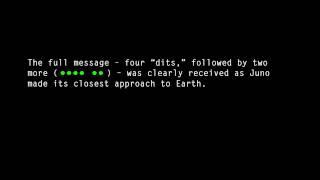
Probe Hears Eerie Intelligent Signals. Oh Wait: It's Us! | Video
Added 711 Views / 0 LikesAmateur radio operates beamed up 'Hi' in morse code on Oct. 9th, 2013 to NASA's Juno spacecraft. It was received by the probe and the audio from the event was sent back to Earth.
-
01:10
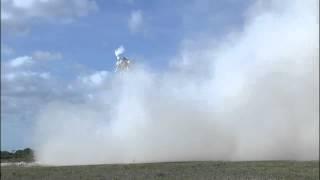
Prototype Morpheus Lander Soars In First Free Flight | Video
Added 745 Views / 0 LikesOn 10 December 2013, a lander that uses NASA automated landing tech, conducted a free-flight in which it flew forward and landed 23 feet from its launch point. It could be used deliver cargo to asteroid and other planetary surfaces.
-
07:04
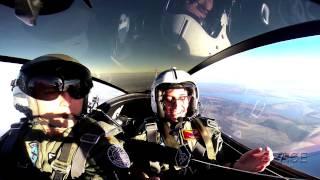
Zero to 4G's: Fighter Plane Thrill Ride - Amazing Cockpit Video
Added 749 Views / 0 LikesCome along for the ride as SPACE.com's @MiriKramer flies with fmr. Air Force pilot Russell Campell aboard a Marchetti SF260. 10 seconds of weightlessness into a 4G turn, Cuban 8 maneuver and more..she even gets to fly the plane! Read more about it here: h
-
02:30
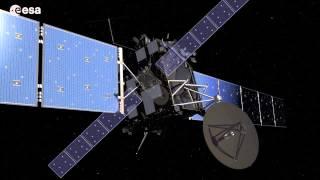
How ESA's ROSETTA Comet Probe Wakes Up in Deep Space | Video
Added 864 Views / 0 LikesThis computer animation shows how the European Space Agency's Rosetta spacecraft wakes up from deep space hibernation on 20 January 2014. The spacecraft is headed for a 2014 rendezvous with the Comet 67P/Churyumov--Gerasimenko.
-
01:22
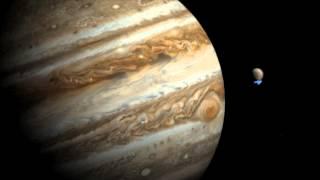
Jupiter Moon Europa's Water Plume Spied By Hubble - Artist Impression Video
Added 885 Views / 0 LikesThe Hubble Space Telescope imaged a water vapor plume emanating from the Moon in Dec. 2012 observations. The artist impression uses actual Jupiter and Europa images with the size of the plume being accurate but the brightness is increased for effect.
-
14:52
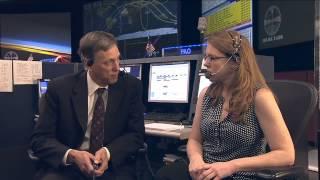
Space Station Malfunction: NASA Explains Cooling System Shutdown | Video
Added 791 Views / 0 LikesISS Mission Operations Integration Manager Kenny Todd explains what happened with the station's cooling loop on Dec 12, 2013 and the efforts to fix the problem. The ISS crew is not in danger but an Orbital Science's cargo delivery may be delayed.
-
03:21
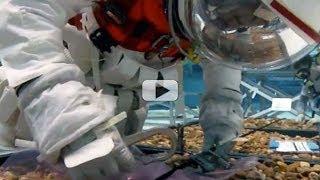
Asteroid Spacewalk Underwater Simulation Tests New Orion Suits | Video
Added 781 Views / 0 LikesA modified version of the orange Advanced Crew Escape System (ACES) suits worn during launch and re-entry of Space Shuttle flights was tested at the Neutral Buoyancy Laboratory (NBL) near NASA's Johnson Space Center in Houston.
-
01:28
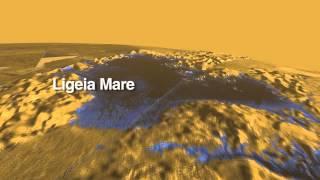
Tour the Strange Lakes of Saturn's Moon Titan | Video
Added 855 Views / 0 LikesSoar over Saturn's moon Titan to get a bird's-eye view of the moon's vast lakes of liquid hydrocarbons in this video made from imagery and data collected by NASA's Cassini spacecraft.
-
04:27
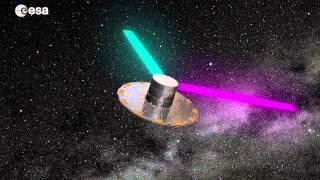
Most Powerful Camera To Fly In Space To Snap 3D Milky Way Map | Video
Added 872 Views / 0 LikesESA's Gaia mission's billion pixel camera will create the most accurate three dimensional map of our galaxy (mapping a billion stars). Find out how it will do it. The mission is scheduled to launch on December 19th, 2013.
-
10:08

Orbiting NASA Astronaut Talks Station Malfunction With SPACE.com | Video
Added 754 Views / 0 LikesISS crew member Rick Mastracchio gives an update on the cooling system failure that occurred on Dec. 12, 2013 and the possible spacewalk to repair. Also, he answers SPACE.com reader questions and talks Christmas.
-
02:23
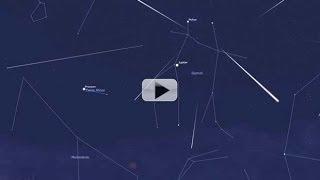
Most Intense Meteor Shower - How To See Geminids This December | Video
Added 804 Views / 0 LikesThe meteor shower peaks on December 13 and 14, 2013 and NASA is all over it. The shower will be fairly active through December 16th, though the moonlight will cause some interference.
-
01:15

Massive Coronal Hole To Blast Earth With Solar Wind | Video
Added 803 Views / 0 LikesA large coronal hole has rotated its way into an Earth-affecting position. It is a dark region where the Sun's magnetic field is more open and emits high-speed solar wind. Auroras may be on tap for Earth as a result .
-
06:53
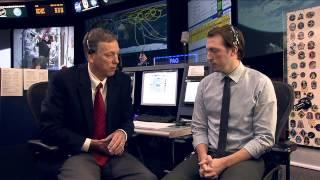
Space Station Malfunction: Fixes Discussed By NASA | Video
Added 733 Views / 0 LikesSpace Station Malfunction: Fixes Discussed By NASA | VideoISS Mission Operations Integration Manager Kenny Todd gives an update on the Space Station cooling issue that occurred aboard the International Space Station in Dec. 2013.
-
05:04
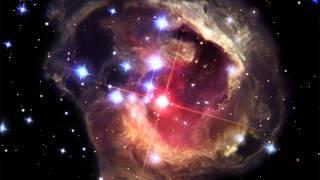
Variable Star Seen Pulsating By Hubble | Time-Lapse Video
Added 794 Views / 0 LikesVariable star RS Puppis was observed by the Space Telescope over a period of 5 weeks. These types of stars are unstable because they have consumed most of the hydrogen fuel. The pulsations seen are not moving gas, but light echoes.
-
03:24
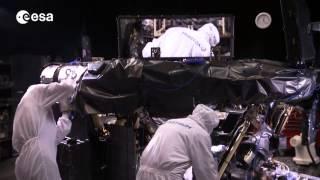
Galaxy's Most Precise 3D Map: Gaia Probe Will Make It | Video
Added 648 Views / 0 LikesUsing a billion pixel camera and 2 telescopes, the European spacecraft will scan every star at least 70 times during a 5 year period. This will create the most comprehensive guide to the Milky Way to date.
-
02:18
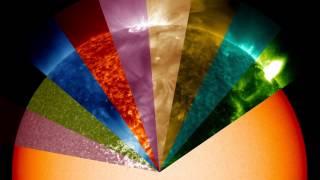
Spacecraft's 'Rainbow Eyes' Looks Deep Into The Sun | Video
Added 765 Views / 0 LikesNASA's Solar Dynamics Observatory views the Sun in multiple wavelengths, each one revealing a little more about its dynamics. The views are compiled to reveal how different parts of the Sun appear under each wavelength or 'color'.
-
01:25
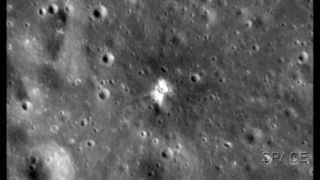
Meteor Slams Moon, Creates 59-Foot-Wide Crater: Before and After Video
Added 799 Views / 0 LikesA 1.3 foot wide space rock, traveling at 56,000 MPH, collided with the lunar surface on March 17th, 2013, and the explosion could be seen with the naked eye on Earth. NASA's Lunar Reconnaissance Orbiter snapped imagery of the impact area.
-
01:02

Fireball Burns Bright As The Moon Over Tennessee | Video
Added 756 Views / 0 LikesA piece of an asteroid likely from the asteroid belt burned up over Tennessee December 17th. The object was around 20 inches across and weighing approximately 400 lbs.
-
07:12
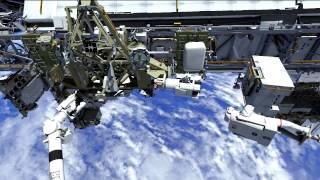
Space Station Malfunction: Spacewalk Repairs Explained By NASA | Video
Added 854 Views / 1 LikesLead U.S. Spacewalk Officer Allison Bolinger explains what the ISS astronauts will be doing over 3 spacewalks to repair cooling system. A pump module needs to be replaced.
-
04:49
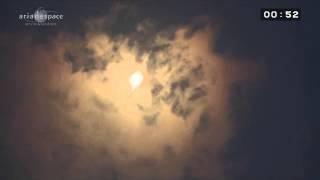
Blast Off! Billion Star Mapping Mission Underway | Video
Added 770 Views / 0 LikesEuropean Space Agency's Gaia spacecraft launched from Kourou, French Guiana on Dec. 19, 2013 aboard a Russian Soyuz-Fregat rocket. The spacecraft will deliver the most comprehensive map of the Milky Way to date.
